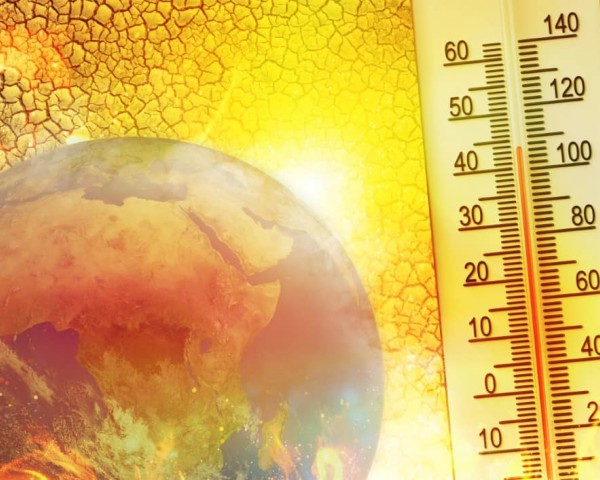The summer of 2025 is proving difficult for Europe. An intense heatwave, pushing temperatures toward 115°F (46°C), is severely impacting European tourism in popular destinations like France, Spain, Portugal, Italy, and Greece.
The consequences range from the temporary shutting down of landmarks such as the Eiffel Tower to a noticeable increase in heat-related hospital visits, putting a strain on existing infrastructure. It’s undeniably changing the vacation experience and, frankly, raising some very tough questions regarding tourist safety, environmental sustainability, and just what the future holds for European tourism.
Europe Under Heatwave
Record temperatures have been noted, most notably in Portugal, where the town of Mora recorded temperatures up to 115°F (46°C), figures reported to be some of the highest ever seen in Europe, according to their weather agency, IPMA. Simultaneously, hospitals in Italy have experienced a jump of 15-20% in admissions related to illnesses such as dehydration and heatstroke; tragically, some cases have resulted in fatalities, illustrating the severity of this situation. Furthermore, marine heatwaves are affecting the Mediterranean, driving sea temperatures as high as 78-86°F (25-30°C). Coastal areas in Spain and Greece are struggling to offer their residents and tourists much-needed relief from the oppressive heat.
Take the Eiffel Tower, for example. Its summit was closed on July 1st and 2nd when Paris reached 104°F (40°C), demonstrating the disruption’s scope. Unable to enjoy the views, visitors congregated around the Trocadéro Gardens’ fountains, a small indication of the lengths people are going to in order to escape the sweltering conditions. Overcrowding and closures due to safety concerns plague beaches across the area, lessening the appeal of the classic Mediterranean getaway.
The Economic and Environmental Impact
Tourism is an important part of the EU’s GDP, contributing about 10%, so naturally, disruptions are a major economic issue. Closed attractions, decreased customer satisfaction, and stretched infrastructure put revenue at risk in countries that depend on summer travel. On the environmental side, the heatwave is making existing problems worse. Increased cooling demands in cities increase emissions, and rural areas facing drought also deal with additional water shortages because of tourism. There is increasingly vocal frustration coming from local farmers and conservationists, who are very concerned about the strain on ecosystems.
Consider Barcelona. Protests against overtourism are getting more intense, and activists have even used water pistols to protest overcrowding and resource shortages. These actions show growing dissatisfaction with a style of tourism that climate change is making very difficult to maintain.
EU Climate Policy Under Scrutiny
The European Commission’s suggested 2040 climate objective – a 90% reduction in net carbon emissions – has been criticized by Greenpeace for not going far enough, falling short of the 90-95% domestic reductions suggested by the European Scientific Advisory Board on Climate Change. The inclusion of international carbon credits, letting up to 3% of reductions come from paying non-EU countries, along with relying on “permanent” carbon removals, which could harm biodiversity, has caused worries about possible loopholes undermining the goal. According to Greenpeace, such compromises may significantly lower actual emission cuts, potentially weakening the EU’s leadership in the climate sector.
Still, the Commission’s plan does include some good points, such as using scientific guidance, analyzing the costs of inactivity, and prioritizing biodiversity and a fair transition. As the proposal proceeds to the European Parliament and national ministers for discussion, hopefully to be finalized before the UN’s COP30 in Brazil on November 10, 2025, there’s growing pressure to create a stronger and fairer climate strategy.
A Call for Sustainable Tourism
This heatwave emphasizes the need for rethinking European tourism. Cities are considering options like capping cruise ship numbers, managing accommodations, and investing in climate-resistant infrastructure. The goal is to find a balance between the financial benefits with ecological and social sustainability. For tourists, the high temperatures act as a stark reminder of the EU’s climate situation, leading some to rethink their travel plans or choose cooler locations. Europe is currently facing a really hot summer, which brings together unprecedented heat levels, some disruption to tourism, and ongoing discussions regarding climate policies, marking a crucial moment. To ensure that tourism remains strong and its famous destinations stay lively and available for generations to come, Europe should tackle infrastructure shortcomings, control excessive tourism, and definitely pursue ambitious domestic emissions reductions.

